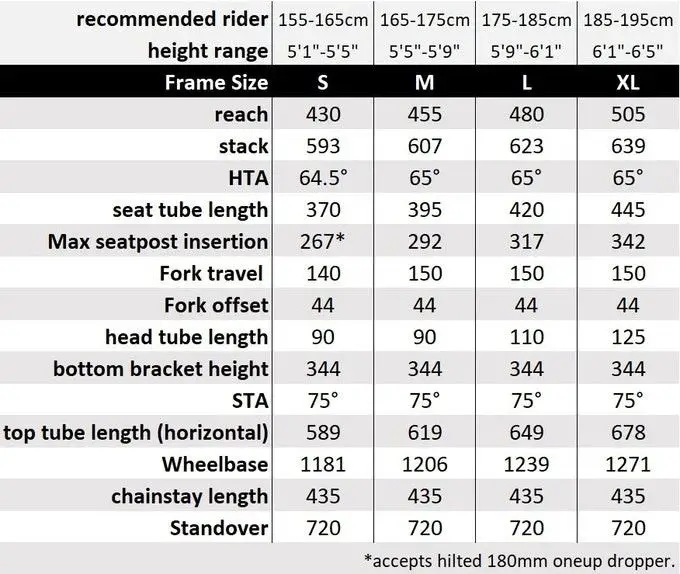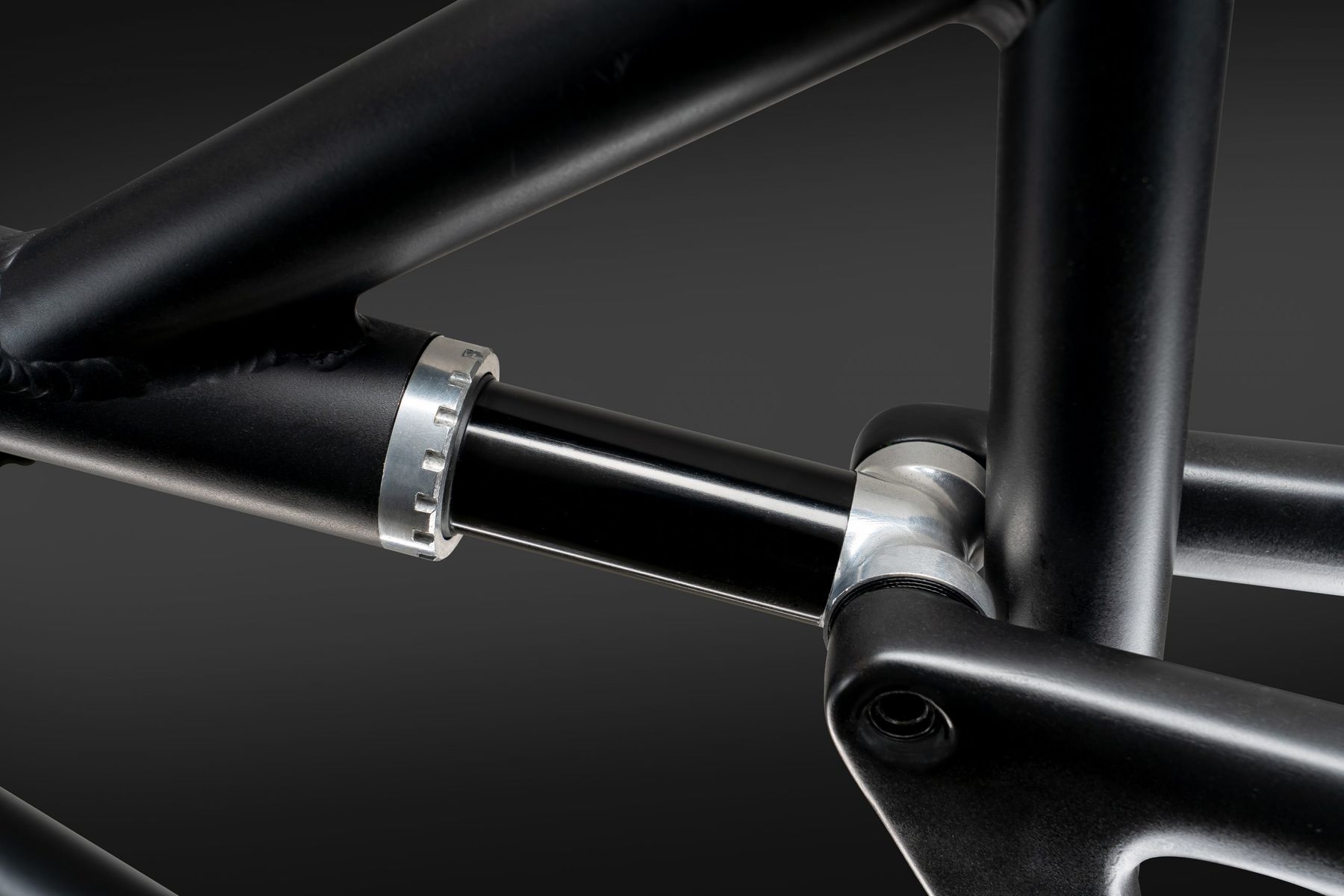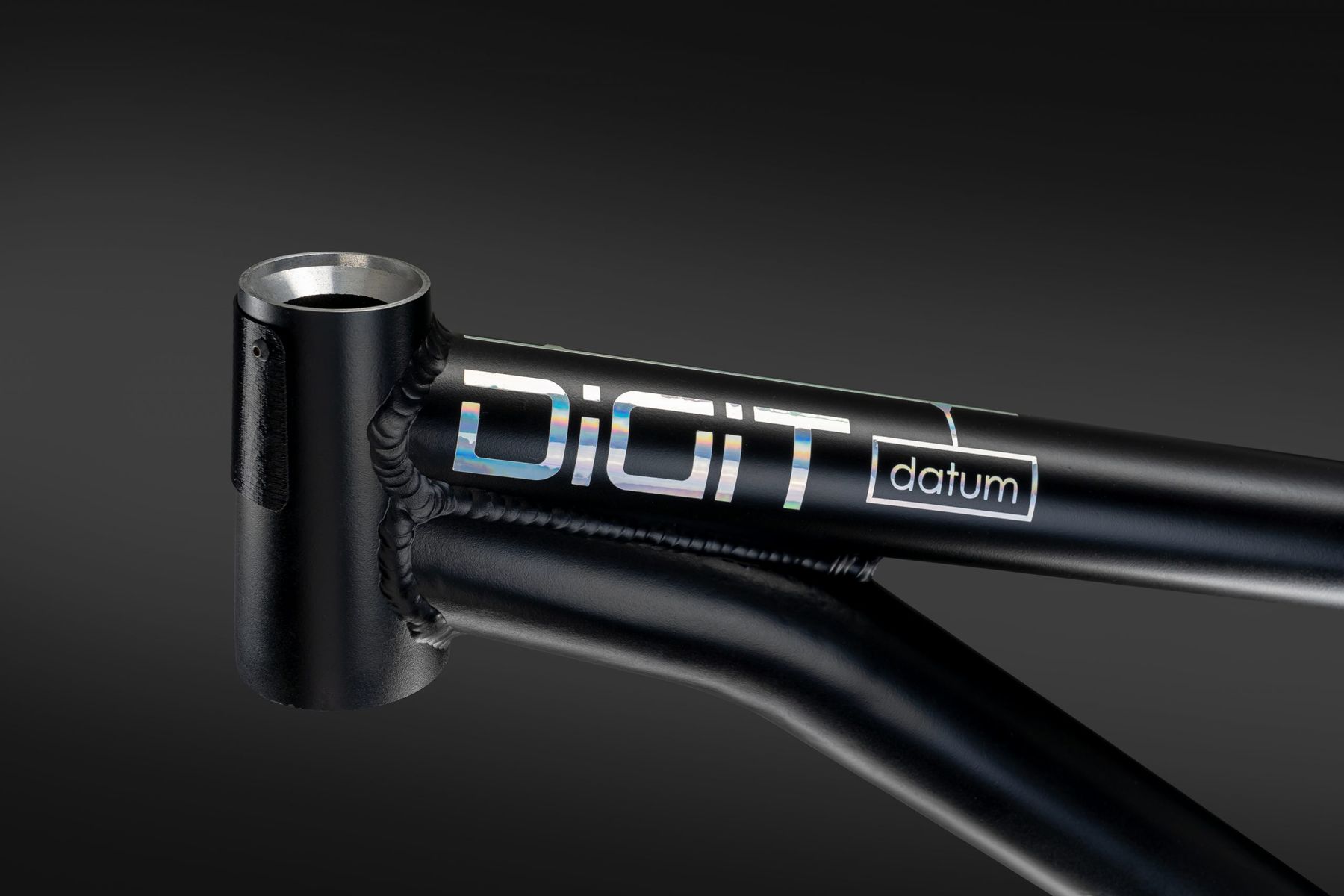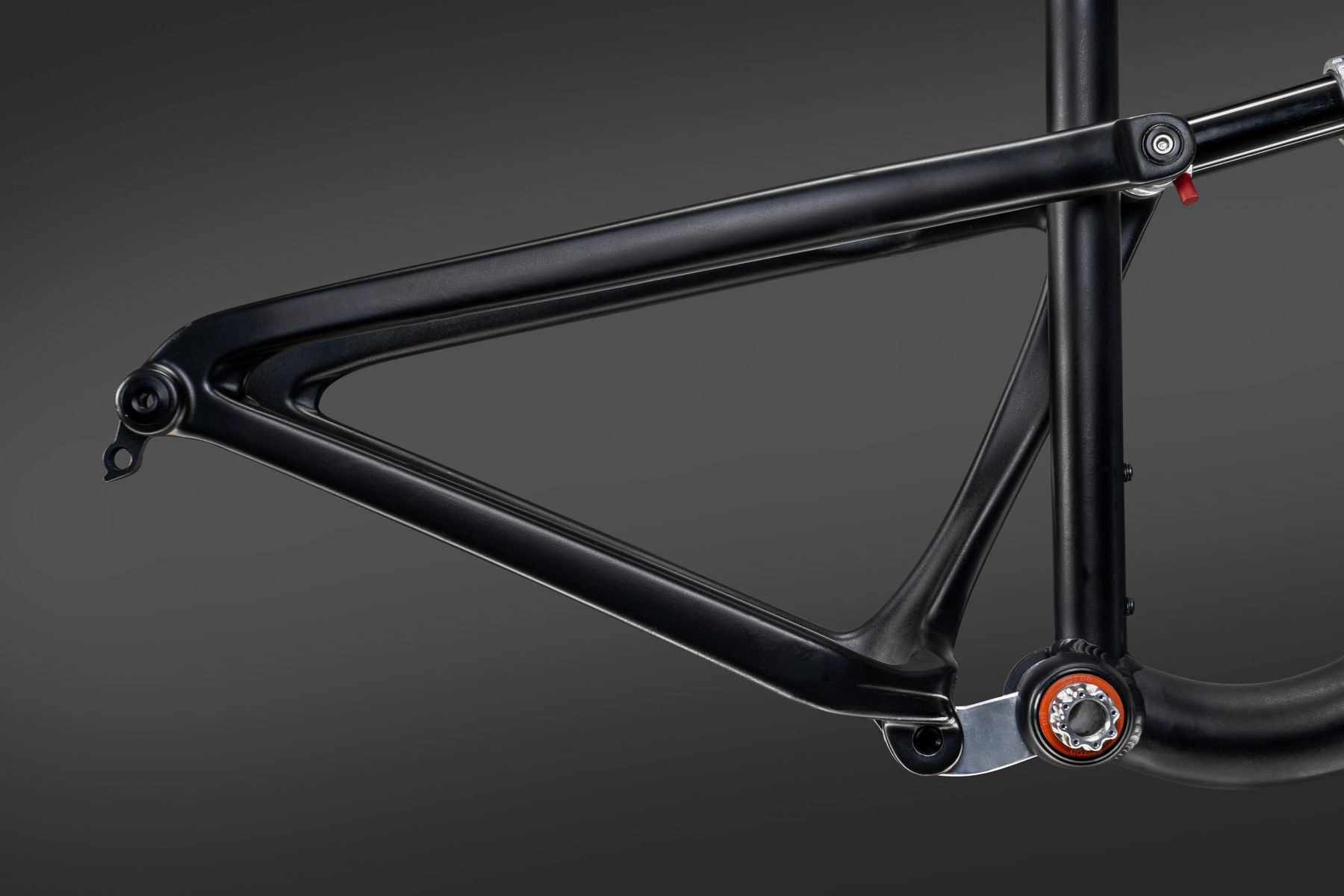Digit Bikes launch the Datum, and with it a new Kickstarter campaign. The Datum is designed for all-mountain or trail and comes with 140mm rear analog suspension. Manufactured in California, the frames have undergone extensive testing over the past few years.
To start the company will be making frames only and not complete bikes. The frames are aluminium, fit at 27.5″ rear wheel and 29″ front wheel with 150 or 160mm fork. The frame weighs in at around 7.25lbs/3.2kg. The man behind the bike is Tim Lane, a man with extensive experience in bike design having worked with Felt and a number of other companies. He’s also the man behind DirtBaggies. Originally from the UK, he moved to the US for work and is now launching Digit.
The Digit Datum

Its all-new analog suspension matches both the better descending and pedaling attributes of the industry’s most respected four-bar suspension systems, while delivering significantly reduced weight, carrying more water bottles, and offering improved reliability.
Digit

Digit Datum Kickstarter
Here’s some info from the Kickstarter:
Analog suspension was conceived from the realization that on most 4-bar suspension systems the upper link undergoes large angular displacement, which can cause the linkage’s instant center¹ to move wildly, and for the leverage rate to get all funky². This can cause the suspension’s behaviour to change unpredictably throughout its travel, which in turn results in a loss of control for the rider.
The slider in the Analog system does away with the short upper link parts, yet functions like an infinitely long link. Doing so removes that angular displacement problem altogether, this helps keep migration of the Instant Center under control throughout the travel. The suspension performance is thus controlled throughout its travel resulting in a predictable, surefooted ride.
¹[sometimes called the virtual pivot point.]
²[scientifically speaking] 
My big take-away from engineering school was that efficiency and simplicity are the keys to success. I include sustainability in the efficiency system, because EVERYTHING is the system. Made-in-USA is the only way to get around the supply chain constipation, I spoke to various factories in the Far East, they’re all years away from being able to take on new work (I think I’d be very lucky to make this by 2024 over there).
Tim Lane.
Analog Suspension
There are several side-effects to replacing the upper link assembly with a slider, happily, these are all good or great:
- Increased chassis stiffness, because there are fewer parts to flex.
- Reduced free-play in the chassis, because there are fewer pivots and bearings in the system. Using only 3 pivot sets, and low leverage ratios minimizes the stack-up of backlash in the system.
- There are no shock eyelet bushings, which are a common free-play, stiction, and maintenance problem area on most other suspension designs.
- Significant weight saving – typically in the 200-600g range.
- Capacity for the longest dropper seat-posts, because the seat-tube runs straight all the way to the bottom bracket.
- Room for two water bottles in the front triangle, there’s also a third bottle location under the down tube.
- Low 2:1 suspension leverage ratio, which reduces the loads on the frame, shock and oil.
- Longer shocks, which allow improved spring and damper design, for optimal suspension performance.
- Improved reliability, because there are fewer parts which could break.
- Improved reliability, because there are fewer seals where water or mud can penetrate. The seat tube shields the shock from rear-wheel-splatter, and the shock’s wiper-seal cannot be opened by side-loading (fork-type bushings resist that). Also the top surface of the lower link is angled so that any mud falling onto it is deflected away from the drivetrain.
- Reduced environmental impact compared with other suspensions because fewer parts are made.
Geometry

Talking to Tim about the geometry he said:
I don’t like to offset the ST forward of the bottom bracket and then quote an effective STA, which is what I see from many other brands. I think that’s unhelpful for tall people because when the seat is high the actual seat angle still puts them over the rear axle – and tall people are the ones who are supposed to benefit from the steep STA. My wife, a short person at 5’4” doesn’t like offset ST’s because with the seat dropped the saddle is so far forward that it can’t be easily thigh-gripped and is in the way of whatever standover clearance a frame claims to have. So my seat tube is welded right onto the BB shell where the triangle of human geometry meets the bicycle geometry (it’s also structurally efficient).
The offset seat tubes and effective STA’s came about in part to make clearance for long suspension travel of 29″ rear wheels. Because I designed it as a mullet from the get-go I didn’t have a design legacy to uphold (I’ve been riding mullets for a few years now, at 6’0″ the tire hits my arse when I get back on 29″ rear wheel bikes. Though I quickly learn to accommodate the big wheel, I feel the bike should be designed to accommodate the rider not the other way around).
I’ve had some of the most respected USA bike editors test the bike. After riding it I’ve pushed them on whether I should adjust any aspects or the complete scheme for the geometry. It’s an aluminum bike so making changes is relatively easy. They’ve said that the complete package is great for all day, all-terrain epic days, very balanced and not to change anything.
The bike has enough novelty with the suspension link and shock that I wanted to stick with established, proven norms for the kinematic behaviour and geometry. Also, if things go to plan and I can grow the company line-up, eventually there will be models with more longer travel and progressive geometry, and less travel and steeper angles.
Tim Lane

Digit Datum Frame Features:
- Custom butted aluminum frame. Made in USA.
- Rear: 140mm rear travel, fits 27.5″ rear wheel, tires up to 27.5″x2.6″, 180mm post-type brake mount. 148Boost axle included with frame.
- Front: match with 29″ front wheel 150mm or 160mm travel fork (140/150mm fork on size S). Fork not included.
- Shock/strut: Digit INTEGER Strut (External adjustments: air pressure, LSR and LSC damping. Internal adjustments: positive air volume, negative air volume, shim adjustment of LSC, HSC, LSR, HSR).
- Seattube: fits 30.9mm diameter with internal dropper post routing.
- Seatpost collar: 34.9mm inside diameter, included with frame.
- Headset: IS41/52, Cane Creek Hellbender70, included with frame.
- Bottle mounts: front of seat tube, top of down tube, under-side of down tube.
- Derailleir hanger: Sram UDH, included with frame.
- Bottom bracket: Cane Creek Hellbender70 PF4130
- Crank compatibility: 30mm x 136.5mm spindle included with frame for Race Face Cinch Next SL/Next R/Turbine cranks. Cranks not included.
- Crank compatibility: 24mm spindle adapter tube included frame for 24mm cranks (e.g. Shimano/GXP). Cranks not included.
For full details, head to the Kickstarter.
Related Content:
Ibis Exie Is Made In-House – Is This A New Movement For Bike Companies?
DirtBaggies Feature bibs & Classic shell
2021 Specialized Epic. Lighter. Faster. More Epic Than Ever!
Singletrack Merch
Singletrack Sponsored Features
Featured Premier Partner
Join our mailing list to receive Singletrack editorial wisdom directly in your inbox.
Each newsletter is headed up by an exclusive editorial from our team and includes stories and news you don’t want to miss.








